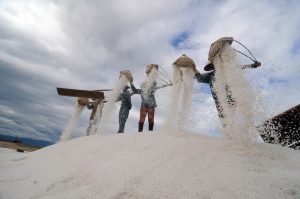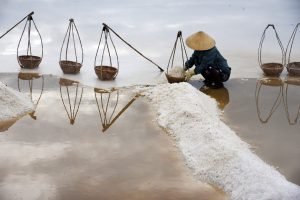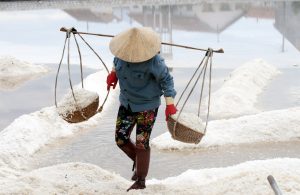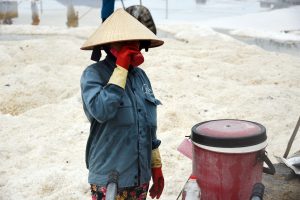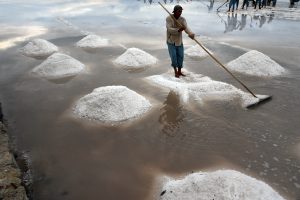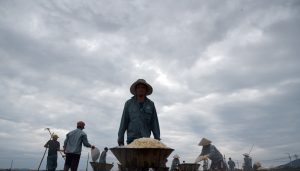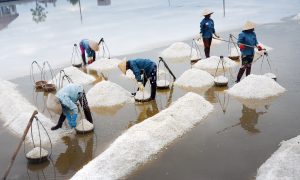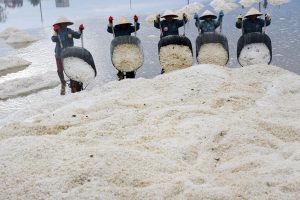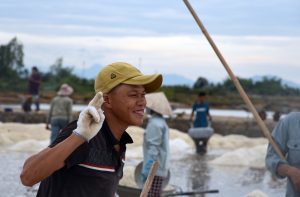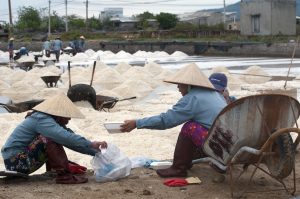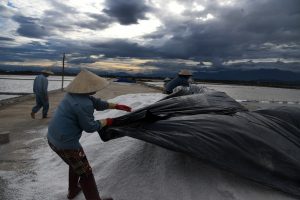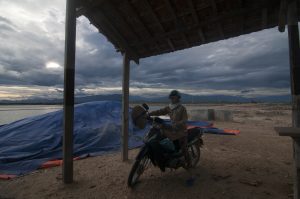In the latter half of the 19th century, south-central Vietnam was introduced to salt farming. Within a few decades, it became such a flourishing business that the mineral was called “white gold,” and a lot of fisherfolk changed their profession to become salt farmers.
One of the largest producers of Vietnamese salt is the Hon Khoi peninsula, around 40 kilometers north of the popular beach town of Nha Trang. This is the home of the dan diem community, who have been harvesting salt for generations in the area’s expansive salt pans. Hon Khoi produces a third of Vietnam’s salt. The 30,000 tons of annual production is used for domestic consumption and also exported to Japan and the United States.
In recent years, however, salt harvesting in Hon Khoi has been deeply affected by a drastic change in climate. The dry months from January to June have been the traditional salt harvesting season. When seawater gathered in the pools in the salt fields is evaporated by the scorching summer sun, the salt farmers move in to rake out the saline crystals. But in recent years, early arrivals of the wet season and shifting rain patterns have disrupted the salt harvest, impacting both production volume and quality.
The COVID-19 pandemic has also adversely affected the industry. It has resulted in a sharp dip in salt prices, from $0.50 per kilogram to just $0.26, primarily because the demand for salt in Vietnam’s fishing industry, which is the traditional buyer of domestic salt for fish sauce and seafood products, has hit an all-time low.













